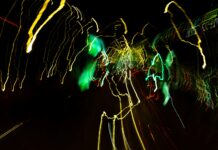Neuro-imaging techniques have revolutionized our understanding of the human brain by enabling non-invasive visualization of its structure and function. These advanced imaging methods provide researchers and clinicians with invaluable insights into neurological disorders, cognitive processes, and brain development. By employing various technologies and approaches, neuro-imaging techniques offer a window into the intricate workings of the brain, shedding light on its complexities and contributing to the progress of neuroscience and medical diagnostics.
Neuro-imaging techniques encompass a diverse array of methods aimed at capturing different aspects of brain activity and structure. These methods leverage cutting-edge technologies, computational algorithms, and interdisciplinary collaborations to unravel the mysteries of the brain. The information gleaned from these techniques not only enhances our theoretical understanding of brain function but also has significant practical implications for diagnosing and treating neurological and psychiatric conditions.
Functional Magnetic Resonance Imaging (fMRI) is one of the cornerstone neuro-imaging techniques. By measuring changes in blood oxygenation levels, fMRI provides insights into regional brain activity and connectivity patterns. This method has been instrumental in mapping cognitive functions to specific brain areas and understanding how different regions cooperate in various tasks. Another key technique, Positron Emission Tomography (PET), involves injecting a small amount of radioactive material into the body, which is then tracked as it accumulates in the brain. This allows researchers to observe metabolic processes and neurotransmitter activity, crucial for studying conditions like Alzheimer’s disease and assessing treatment responses.
Structural imaging techniques like Magnetic Resonance Imaging (MRI) offer detailed views of the brain’s anatomy. High-resolution images produced by MRI help identify abnormalities, such as tumors, strokes, or developmental issues. Diffusion Tensor Imaging (DTI), a variation of MRI, focuses on mapping the brain’s white matter tracts, revealing the connectivity between different brain regions. This technique is particularly useful for investigating conditions where communication between brain areas is compromised, such as multiple sclerosis.
Merging structural and functional information is the realm of techniques like Perfusion MRI and Functional Connectivity MRI. Perfusion MRI measures blood flow changes in response to neural activity, providing insights into how different brain regions are engaged during specific tasks. Functional Connectivity MRI, on the other hand, examines the synchronization of activity between distinct brain regions, aiding in the identification of functional networks and their roles in cognition and behavior.
Electroencephalography (EEG) and Magnetoencephalography (MEG) are neuro-imaging methods that directly record neural electrical activity. EEG involves placing electrodes on the scalp to capture electrical signals generated by the brain’s neurons. It’s widely used in studying brainwave patterns associated with different states of consciousness and various cognitive processes. MEG, meanwhile, detects the magnetic fields produced by neural activity, offering high temporal resolution and aiding in pinpointing the precise timing of brain events.
Single-Photon Emission Computed Tomography (SPECT) is another molecular imaging technique used in neurology. Similar to PET, SPECT involves injecting a radioactive substance, but in this case, the emitted single photons are detected, providing information about blood flow and neurotransmitter activity. SPECT is valuable for diagnosing conditions like epilepsy and evaluating blood flow in stroke patients.
Emerging technologies are also making their mark in the field of neuro-imaging. Optical Imaging, for instance, utilizes light to measure changes in blood flow and oxygenation, commonly used in animal research to study brain function. Functional Near-Infrared Spectroscopy (fNIRS), a type of optical imaging, is non-invasive and portable, allowing for monitoring brain activity in naturalistic settings.
In recent years, Connectomics has gained attention as a novel approach to mapping the brain’s intricate neural connections. While not traditionally imaging-based, it involves using advanced imaging techniques to generate detailed connectivity maps, contributing to our understanding of how information is transmitted and processed within the brain’s complex network.
Neuro-imaging techniques have far-reaching applications in both research and clinical domains. In research, these methods provide the means to investigate questions about brain organization, plasticity, and the neural basis of cognition, emotion, and behavior. In the clinical realm, neuro-imaging aids in early detection, accurate diagnosis, and treatment planning for various neurological and psychiatric disorders. Conditions such as traumatic brain injury, schizophrenia, and Parkinson’s disease benefit from the insights gleaned through these techniques, guiding therapeutic strategies and offering markers for disease progression.
In conclusion, neuro-imaging techniques represent a remarkable convergence of technology, medicine, and neuroscience. They enable researchers and clinicians to delve into the intricate realms of the human brain, unraveling its mysteries and contributing to the advancement of both theoretical knowledge and practical applications. As technology continues to evolve, these techniques will undoubtedly continue to enhance our understanding of the brain’s complexity and play a pivotal role in shaping the future of neuroscience and healthcare.
Non-Invasiveness:
Neuro-imaging techniques provide a non-invasive means of studying the brain, allowing researchers and clinicians to gather valuable insights without the need for surgical procedures.
Visualization of Brain Anatomy:
These techniques offer high-resolution images that allow for detailed visualization of the brain’s anatomical structures, aiding in the identification of abnormalities, tumors, and developmental issues.
Functional Insights:
Neuro-imaging methods can capture real-time information about brain activity, enabling researchers to map neural pathways and understand how different brain regions function individually and in coordination.
Temporal Resolution:
Some techniques, like Electroencephalography (EEG) and Magnetoencephalography (MEG), provide high temporal resolution, allowing researchers to track brain activity with millisecond precision.
Spatial Resolution:
Methods like Magnetic Resonance Imaging (MRI) offer excellent spatial resolution, enabling the identification of specific brain regions involved in various cognitive processes.
Connectivity Mapping:
Certain techniques, such as Functional Connectivity MRI and Connectomics, allow for the mapping of neural connections, providing insights into the brain’s complex network and its communication pathways.
Disease Diagnosis:
Neuro-imaging plays a pivotal role in diagnosing neurological and psychiatric disorders by identifying structural and functional abnormalities associated with conditions like Alzheimer’s disease, epilepsy, and schizophrenia.
Treatment Evaluation:
These techniques are instrumental in evaluating the effectiveness of treatments and interventions for brain-related conditions, helping clinicians adjust therapeutic strategies based on real-time feedback.
Research in Cognitive Neuroscience:
Neuro-imaging methods facilitate the investigation of cognitive processes, emotions, memory, and decision-making, enhancing our understanding of how the brain supports complex behaviors.
Individual Variability:
These techniques reveal individual differences in brain structure and function, shedding light on the basis of personality traits, talents, and susceptibilities to neurological disorders.
Developmental Studies:
Neuro-imaging allows researchers to study brain development across the lifespan, providing insights into how the brain changes from infancy to old age.
Functional Localization:
Techniques like Functional Magnetic Resonance Imaging (fMRI) help researchers identify specific brain areas responsible for language processing, motor control, and sensory perception.
Neuroplasticity:
Neuro-imaging provides evidence of neuroplasticity, demonstrating how the brain’s structure and function can change in response to learning, experience, and rehabilitation.
Neurofeedback:
Some neuro-imaging techniques are used in neurofeedback applications, where individuals learn to self-regulate their brain activity, potentially aiding in managing conditions like attention-deficit/hyperactivity disorder (ADHD) and anxiety.
Precision Medicine:
Neuro-imaging contributes to the rise of precision medicine in neurology and psychiatry, enabling tailored treatments based on an individual’s unique brain characteristics.
These key features collectively underline the profound impact of neuro-imaging techniques on our understanding of the brain’s intricacies, their role in advancing medical diagnostics, and their potential to shape the future of neuroscience and healthcare.
Neuro-imaging techniques have transformed the landscape of neuroscience and medical diagnostics, offering an unprecedented glimpse into the inner workings of the human brain. These sophisticated methods utilize a combination of cutting-edge technologies, computational algorithms, and interdisciplinary collaboration to unravel the complexities of brain structure and function. By harnessing the power of these techniques, researchers and clinicians are gaining new insights into neurological disorders, cognitive processes, and the dynamic nature of the brain.
One of the pioneering techniques in the realm of neuro-imaging is Magnetic Resonance Imaging (MRI). This non-invasive method employs strong magnetic fields and radio waves to generate detailed images of the brain’s anatomy. The resulting images provide exquisite structural information, aiding in the identification of abnormalities, tumors, and developmental anomalies. What sets MRI apart is its versatility – it can be adapted to study various aspects of brain function and connectivity, offering a holistic view of brain health.
In parallel, Functional Magnetic Resonance Imaging (fMRI) has revolutionized our understanding of brain activity. By tracking changes in blood oxygenation levels, fMRI enables the mapping of brain regions associated with specific tasks or stimuli. This technique unveiled the brain’s functional networks, revealing how different areas collaborate to execute complex operations. Researchers have utilized fMRI to explore the neural underpinnings of emotions, decision-making, and even the resting state of the brain, providing a window into the brain’s intrinsic connectivity.
Positron Emission Tomography (PET) takes a different approach by introducing a radioactive tracer into the body. As the tracer undergoes decay, it emits positrons that interact with electrons, producing gamma rays. By detecting these gamma rays, PET creates images reflecting the distribution of the tracer and, by extension, the brain’s activity and metabolism. PET scans are invaluable in studying conditions such as Alzheimer’s disease, revealing the accumulation of amyloid plaques, a hallmark of the disease. Moreover, PET enables researchers to examine neurotransmitter systems, shedding light on disorders like depression and schizophrenia.
Electroencephalography (EEG) capitalizes on the brain’s electrical activity. By placing electrodes on the scalp, EEG captures the fluctuations of electrical potentials resulting from synchronized neural firing. This technique is prized for its exceptional temporal resolution, enabling the tracking of rapid brain processes. EEG has illuminated diverse phenomena, from the rhythmic oscillations of different brain states to the distinctive patterns of sleep stages. Furthermore, it has found applications beyond the research realm, serving as a diagnostic tool for epilepsy and a means of communication for individuals with severe motor impairments.
In contrast to EEG’s electrical focus, Magnetoencephalography (MEG) detects the magnetic fields produced by neural activity. MEG offers remarkable temporal resolution, matching the precision of EEG, while providing superior spatial information. This combination allows researchers to pinpoint the timing and location of brain activity with remarkable accuracy. MEG has been instrumental in uncovering the neural dynamics behind sensory processing, language comprehension, and motor control. Its applications extend to preoperative mapping for brain surgery, where preserving critical functional areas is of utmost importance.
Single-Photon Emission Computed Tomography (SPECT) joins the neuro-imaging toolkit by employing gamma-ray detection. SPECT relies on injecting a radiotracer similar to PET but with distinct isotopes that emit single photons instead of positrons. These photons are detected, and their distribution generates images that depict cerebral blood flow and metabolic activity. SPECT’s clinical significance lies in diagnosing conditions like epilepsy, as it can reveal areas of abnormal activity in the brain. Moreover, SPECT aids in differentiating between various forms of dementia, enabling more accurate treatment strategies.
Advancements in neuro-imaging techniques have not only deepened our understanding of the brain but have also opened avenues for novel applications. Optical Imaging, for instance, leverages light to visualize brain activity, often employed in animal studies to understand neural responses. Functional Near-Infrared Spectroscopy (fNIRS), a subset of optical imaging, holds promise as a portable and non-invasive method to monitor brain activity in real-world scenarios. By measuring changes in blood oxygenation levels, fNIRS has been used in educational research to explore cognitive engagement during learning tasks and in clinical settings to assess cognitive impairments.
Connectomics represents a visionary approach that goes beyond the traditional focus of neuro-imaging techniques. While not strictly imaging-based, connectomics aims to comprehensively map the brain’s intricate network of connections. It combines data from various imaging modalities, such as diffusion MRI and resting-state fMRI, to reconstruct the brain’s structural and functional connectivity. This evolving field holds the potential to unveil the fundamental principles governing information flow within the brain and to provide insights into neurological disorders characterized by disrupted connectivity.
The significance of neuro-imaging techniques extends beyond the research realm into clinical practice. These methods empower clinicians with tools for early diagnosis, treatment planning, and monitoring disease progression. In stroke cases, for instance, neuro-imaging assists in identifying damaged brain regions and guiding interventions to restore lost functions. Similarly, in neurodegenerative disorders like Parkinson’s disease, these techniques aid in tracking the degeneration of specific brain areas, enabling tailored therapeutic strategies.
In the context of psychiatric disorders, neuro-imaging is shedding light on the neural underpinnings of conditions like depression, anxiety, and schizophrenia. Functional alterations observed in these disorders are revealing potential targets for therapeutic interventions. Moreover, neuro-imaging is uncovering biomarkers that could aid in predicting treatment responses, ushering in a new era of personalized psychiatry.
In conclusion, neuro-imaging techniques have redefined our understanding of the brain’s complexity and functionality. From the structural insights offered by MRI to the real-time activity mapping facilitated by fMRI, PET, EEG, and MEG, these methods have illuminated the brain’s mysteries. With their continuous evolution, neuro-imaging techniques are poised to continue shaping the landscape of neuroscience, fostering collaborations between disciplines and revolutionizing both research and clinical applications.


















